Jonathan Monk
SL
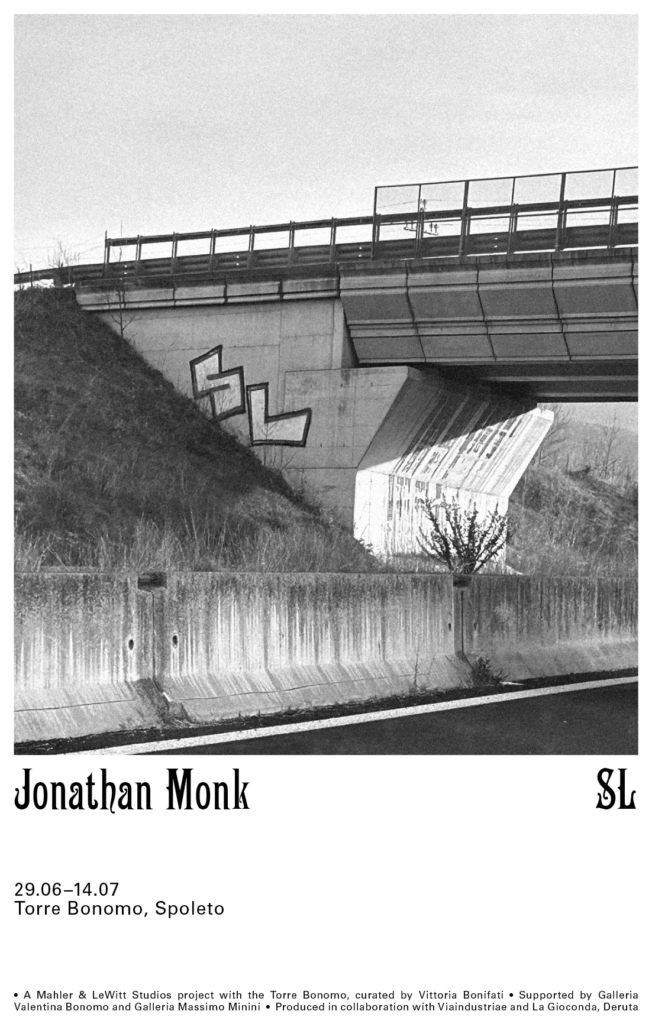
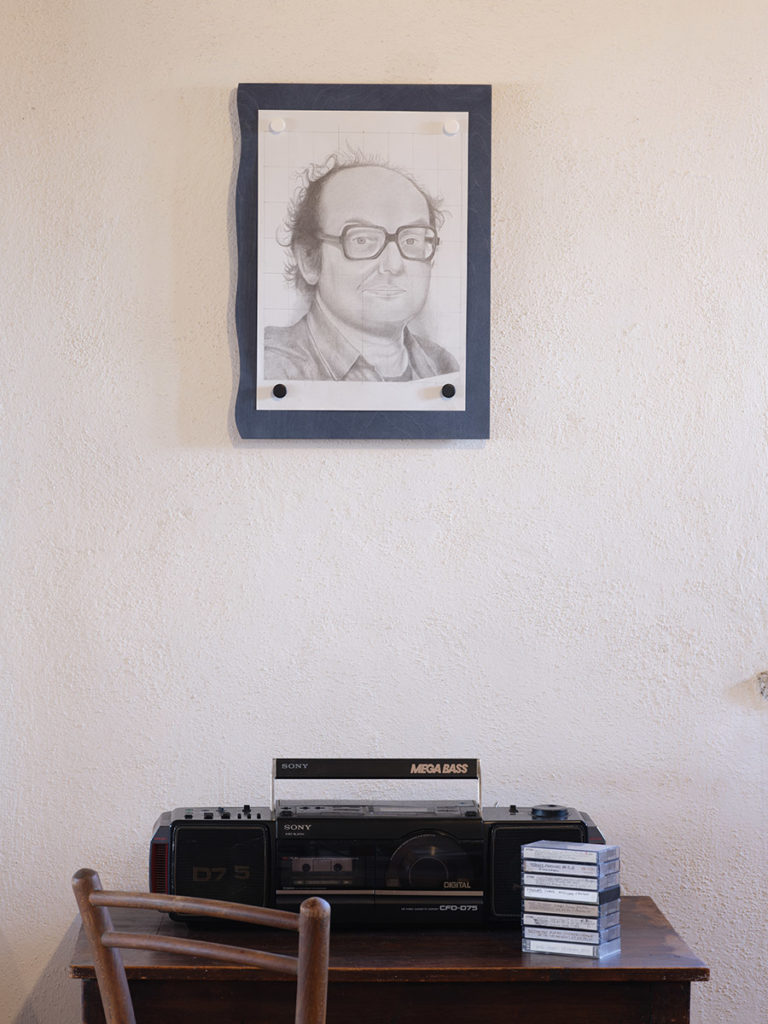
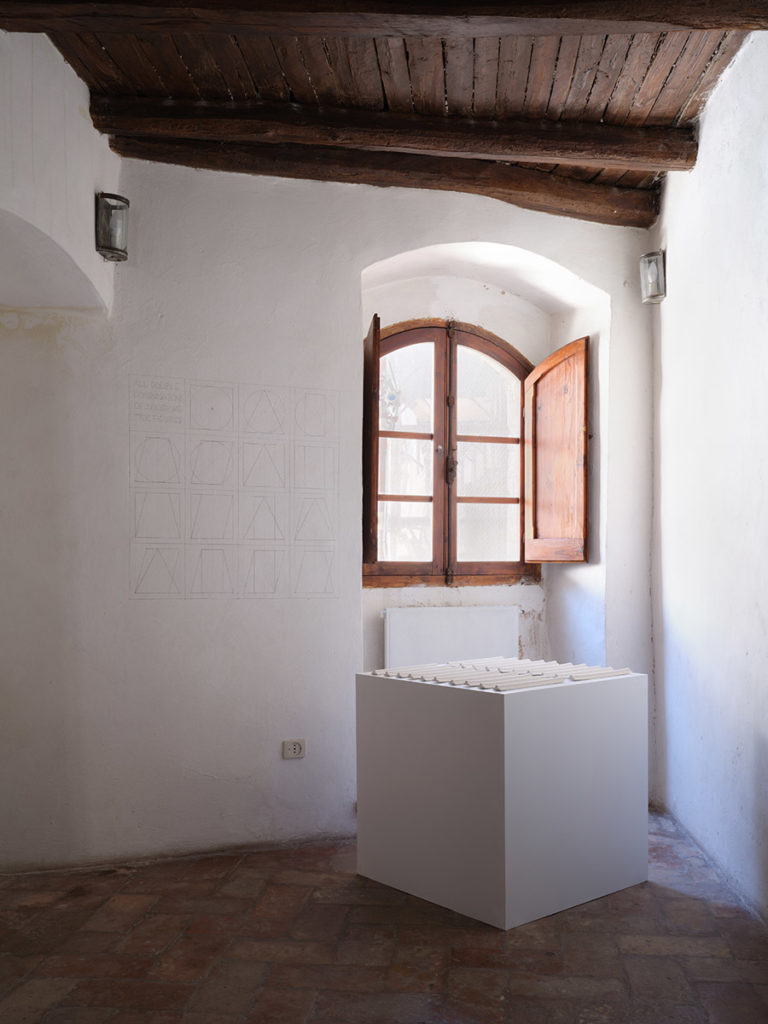
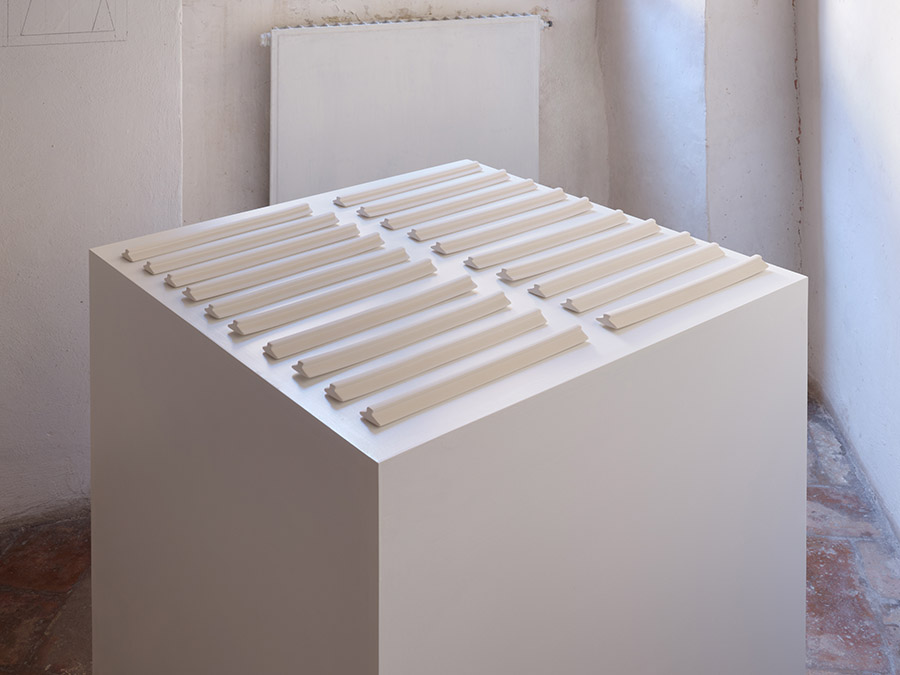
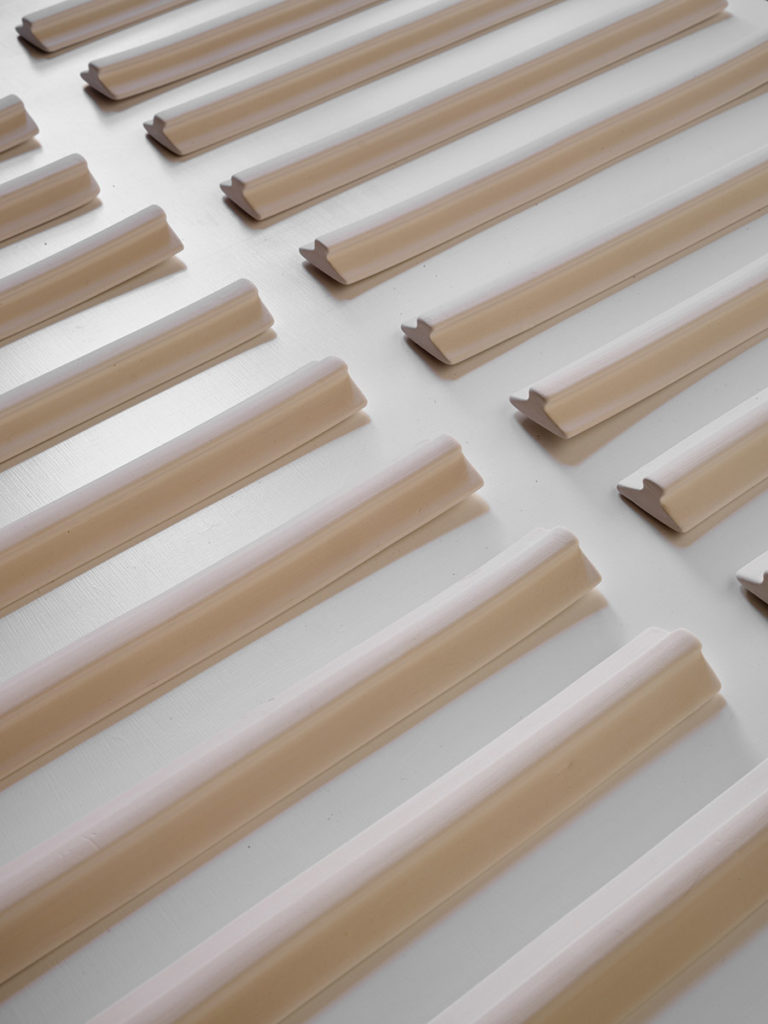
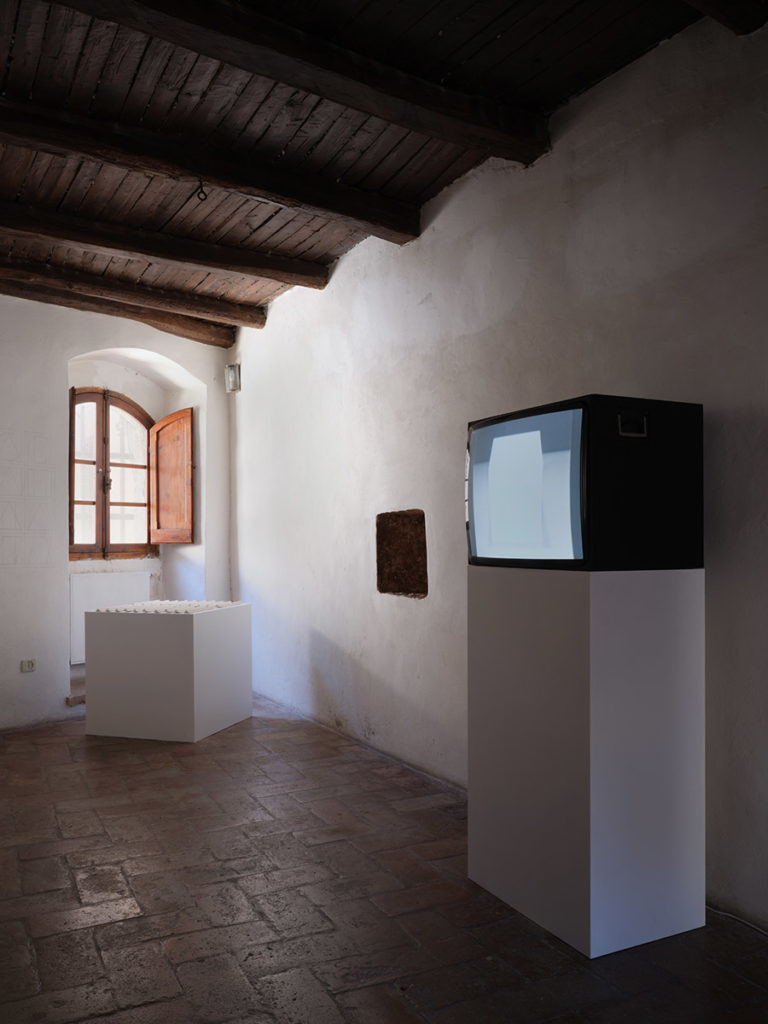
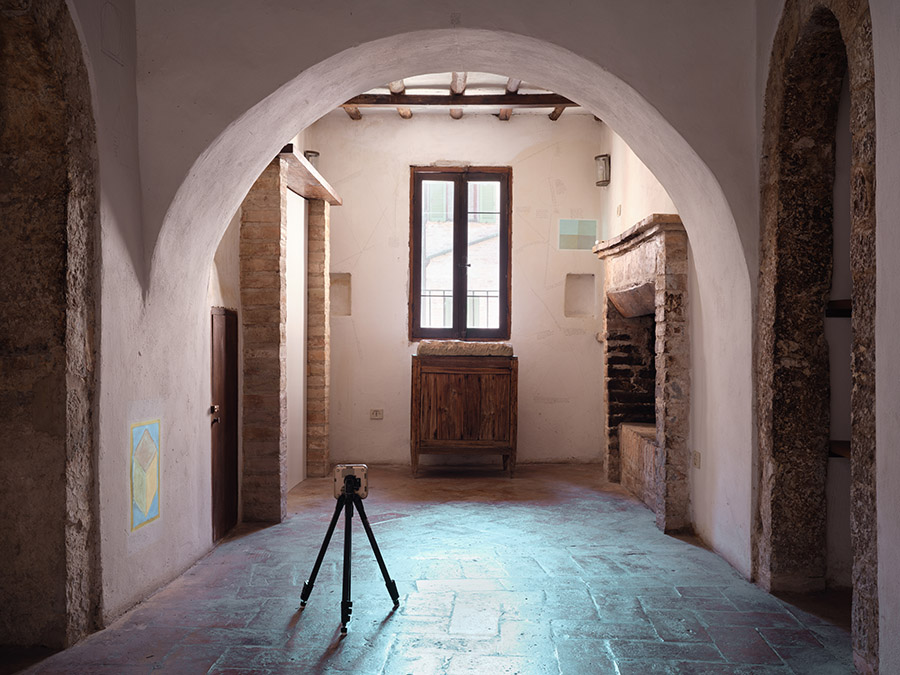

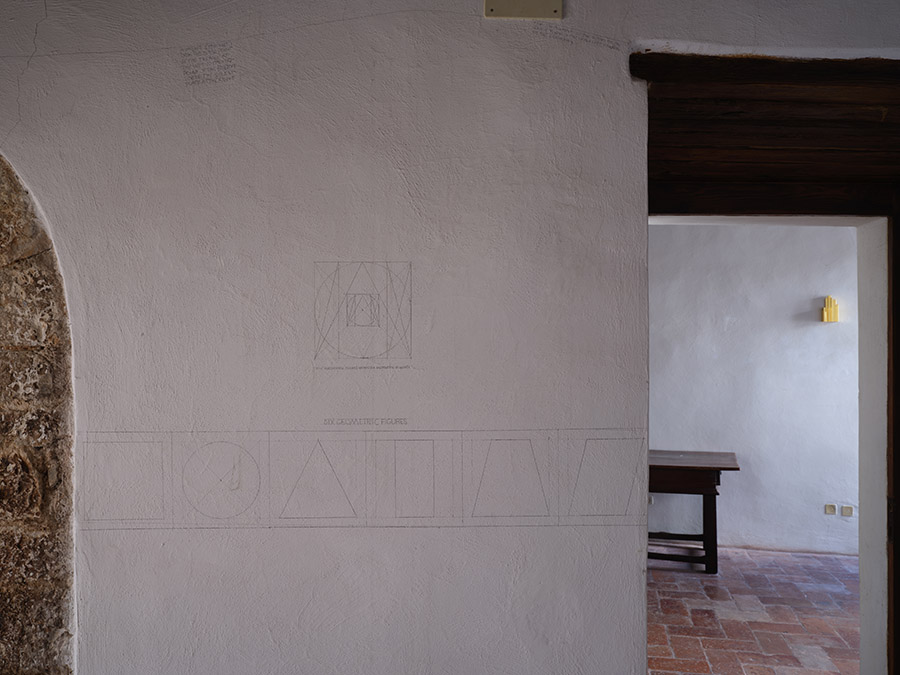
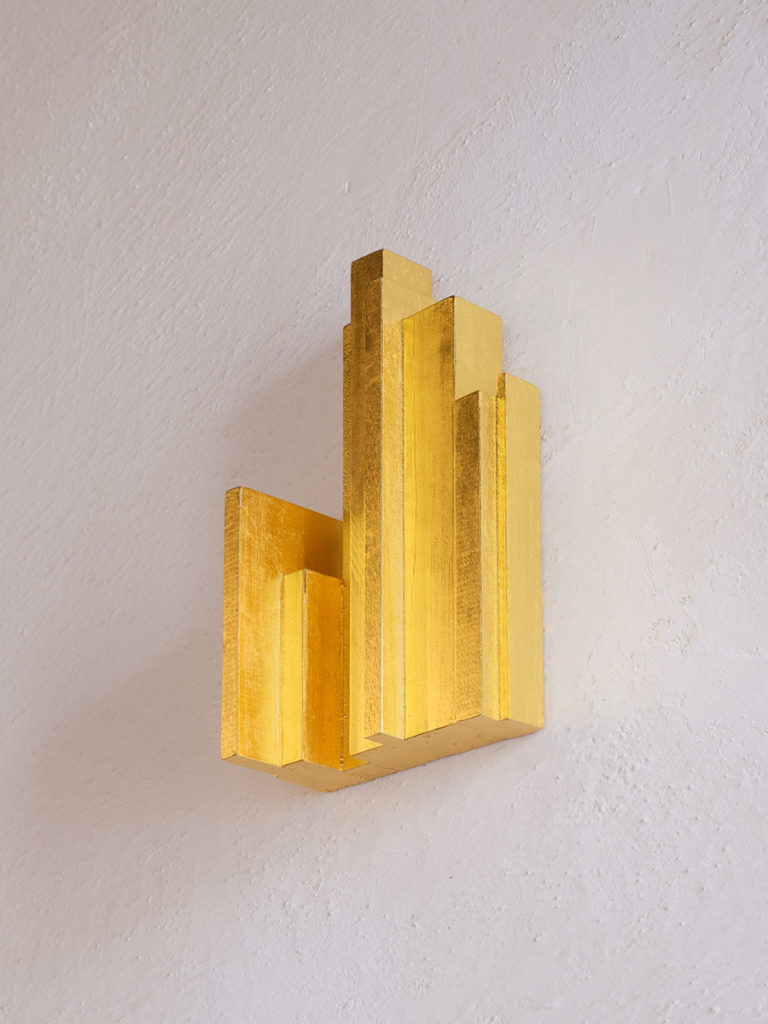
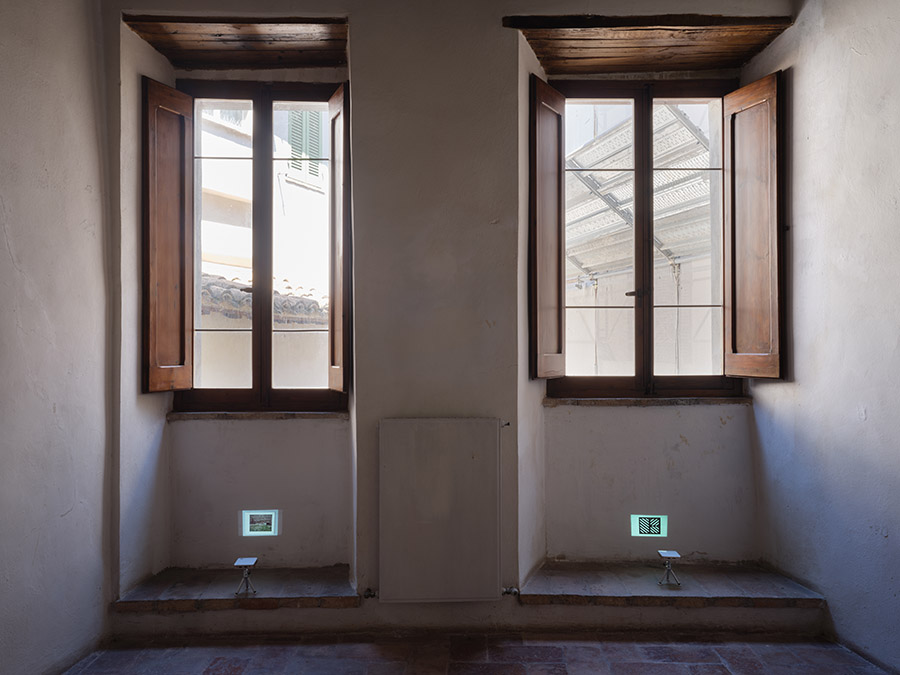
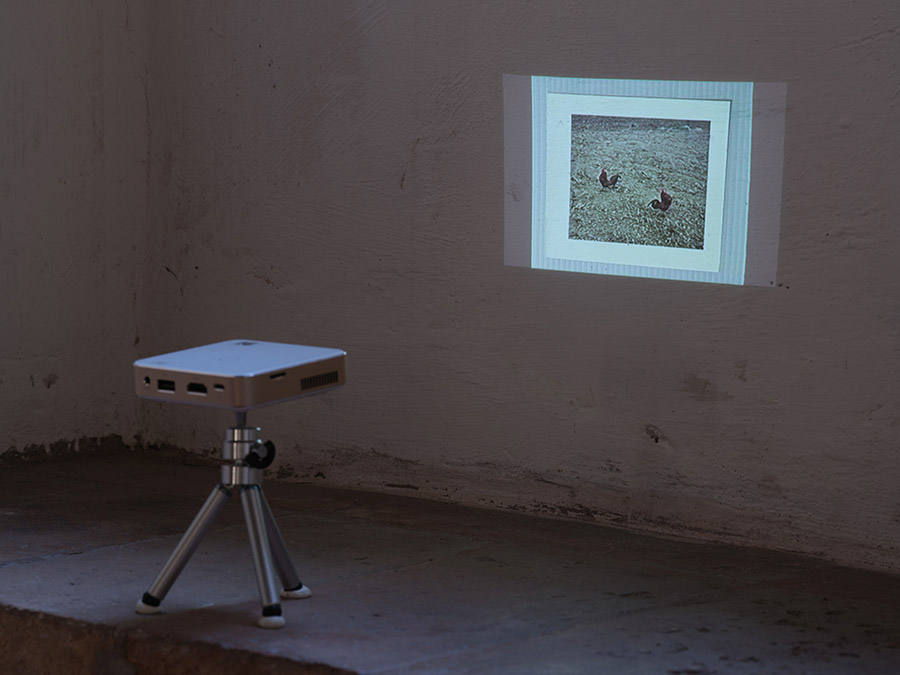
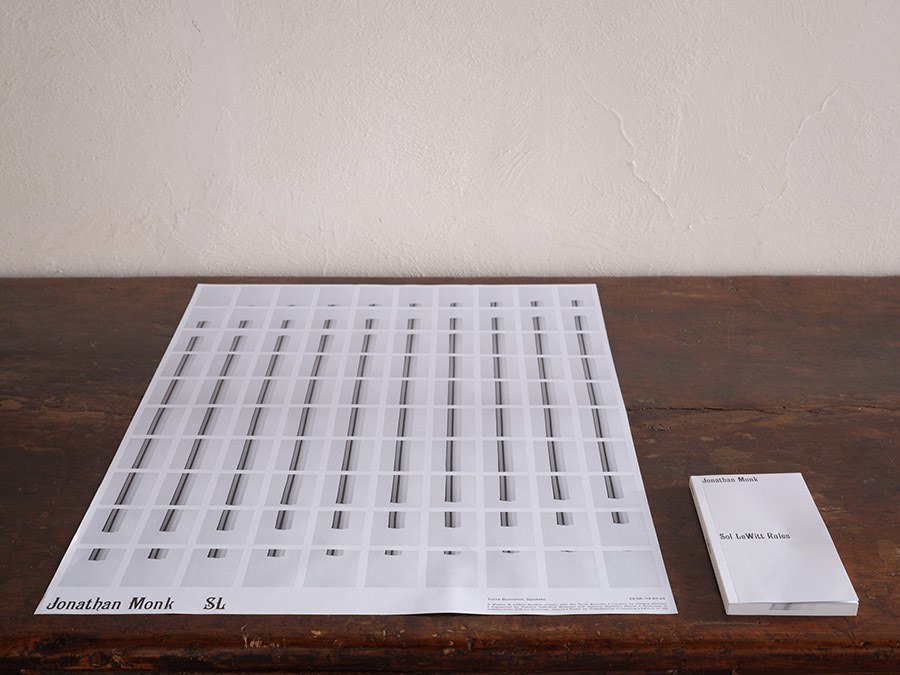

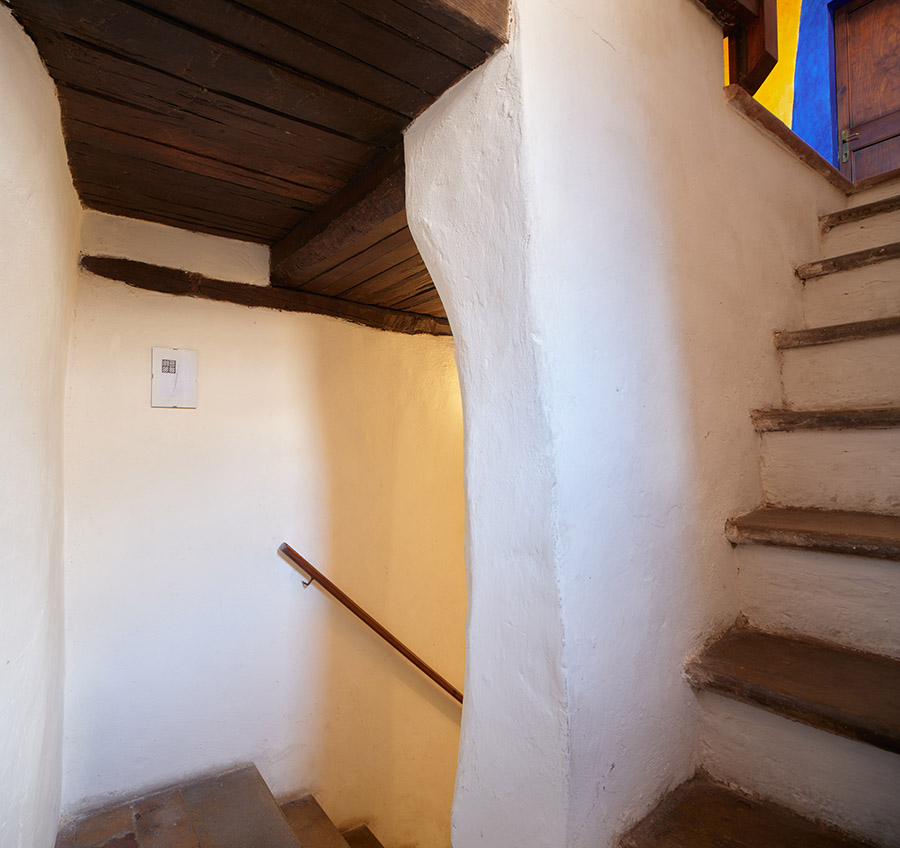
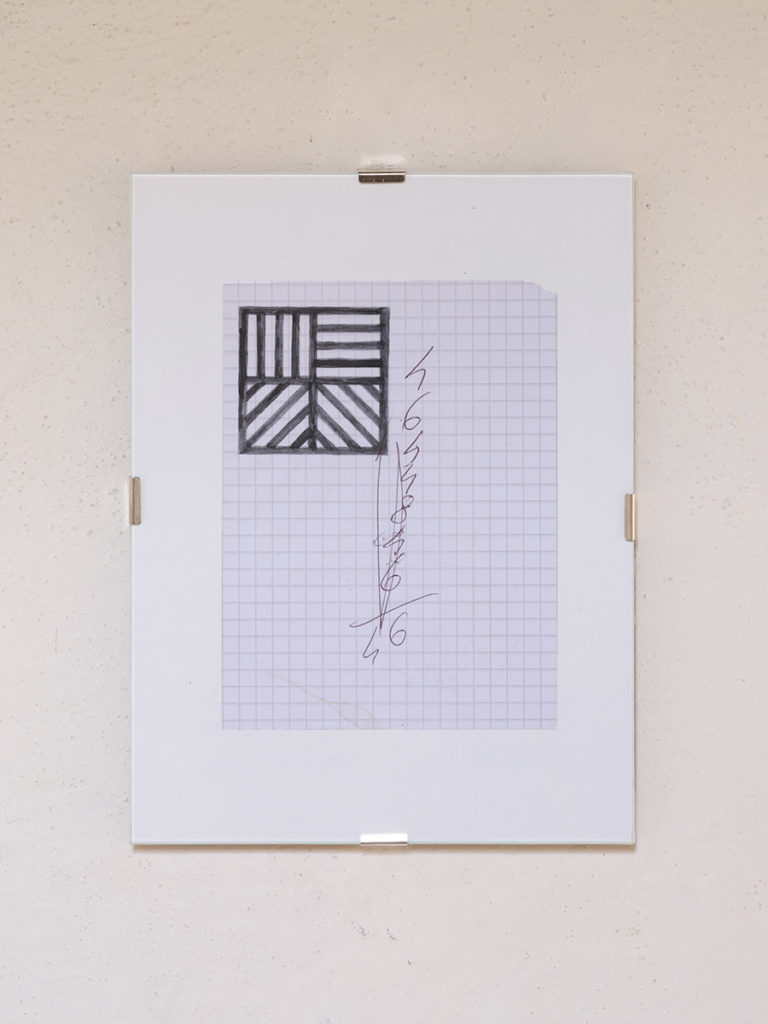
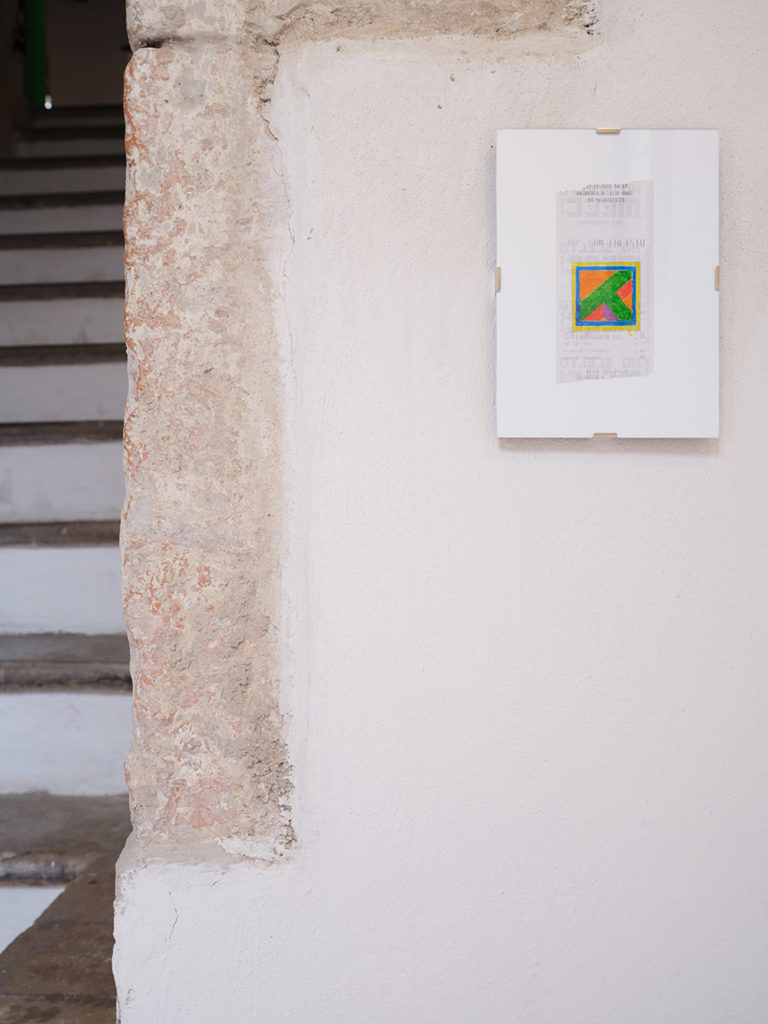
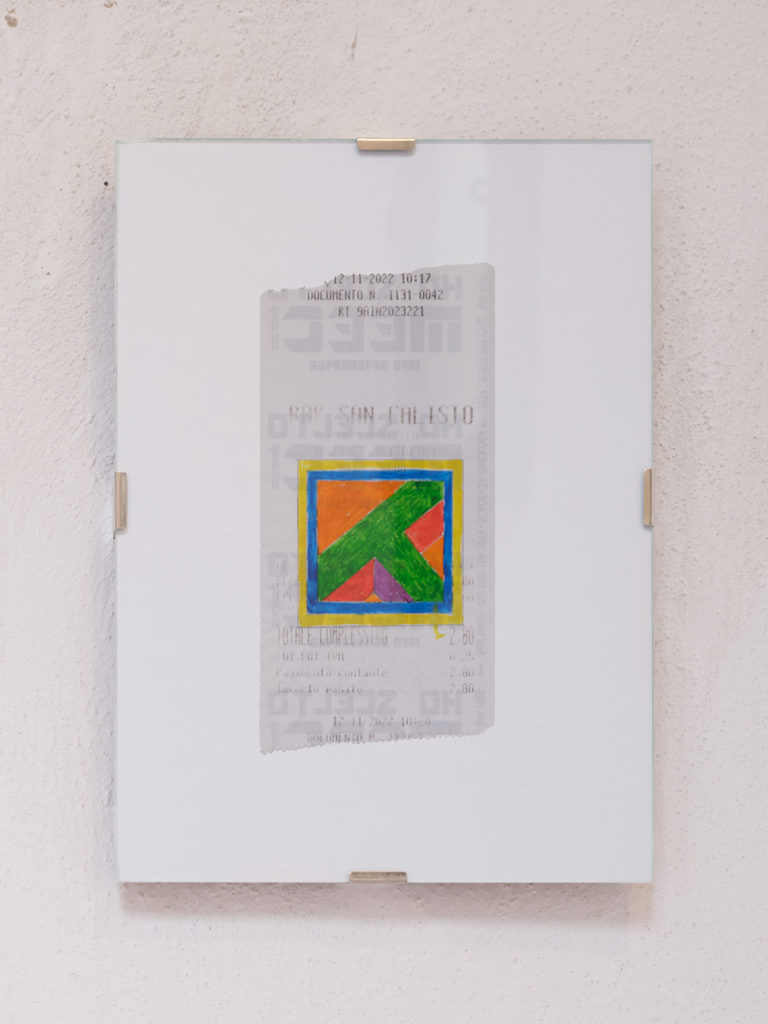

Spoleto Festival dei Due Mondi 67
29 June – 14 July, 2024
Torre Bonomo, Via della Basilica 8, Spoleto
Mahler & LeWitt Studios with Valentina Bonomo and the Torre Bonomo, curated by Vittoria Bonifati
Supported by Galleria Valentina Bonomo and Galleria Massimo Minini
Produced in collaboration with La Gioconda, Deruta and Viaindustriae, Foligno
Review: Brooklyn Rail, ‘Jonathan Monk: SL’, Ginevra de Blasio
Jonathan Monk is a Berlin-based British artist whose work encompasses a wide range of media, including sculpture, painting, photography, film and performance. His practice recalls the procedural strategies typical of Conceptual and Minimalist art of the 1960s and 1970s with a humorous approach often linked to his personal history. Monk reflects on the tendency of contemporary art to devour references; he simultaneously pays homage to figures such as Ed Ruscha, Lawrence Weiner, Alighiero Boetti, Bruce Nauman, Barbara Kruger and Sol LeWitt, whilst demystifying the creative process of art itself and suggesting alternative models for how art and the role of the artist can be interpreted.
SL is the title of Jonathan Monk’s solo exhibition in the Torre Bonomo, presenting a selection of existing and new works produced during his residency at the Mahler & LeWitt Studios in January 2024, in response to the work of Sol LeWitt.
In the early 2000s Monk started making a series of short animation films using artist’s books from his personal collection, often destroying them in the process. Included are books by LeWitt, who was among the first wave of conceptual artists who helped to establish a new radical framework for the publication-as-artwork, and his exemplary approach was instrumental in charting out the reaches of the medium. Monk’s films revisit ideas of serial repetition, re-conceiving LeWitt’s bookworks as a series of still images – sequential lines, colours, geometric forms, and photographic images – without ever transcending the book itself.
The starting point for SL is the 16mm film A Cube Sol LeWitt photographed by Carol Huebner using nine different light sources and all their combinations front to back back to front forever (2001). The work is a black and white 16mm film, transferred to digital, comprising a series of five hundred and eleven still images, which each depict a white, cube-shaped sculpture placed on a flat surface and exposed to a range of different lighting conditions. In all of the shots, the cube is shown at the centre of the frame and the lighting changes continually such that a shadow seems to move constantly over the object and around its edges. The images in the work are photographs that Monk took of all of the pages of a 1990 book entitled A Cube by Sol LeWitt. The cube is a sculpture by LeWitt, the date and title of which is unknown, and the ‘nine light sources’ are lamps that illuminated the object from various angles when Huebner photographed it.
On the first floor of the Torre Bonomo, alongside the cube film, are four animation films by Monk: Sol LeWitt Four Basic Kinds of Lines & Color front to back back to front four four two two four four forever (2000), All the possible ways of opening Sol LeWitt’s Opening Series (2004), and two new films made in Spoleto during his residency in 2024: Sol LeWitt Cock Fight Dance Dancing and SOLLEWITTONEHUNDREDCUBESCANTZSLOWSLOSEASYNOWFRONTTOBACKBACKTOFRONT. Each film is made by using the corresponding book, often of the same title or parts of it, which becomes like a flip book or a “pre-industrial stone age film” as mentioned by Sol LeWitt in a conversation with Jonathan Monk in 2003. The dimensions of the projected images on the walls are the same dimensions of the pages of the books. Seemingly failing to transcend into another medium, the films deceive the viewer giving the impression of flicking very quickly through a book.
In the early 1970s Sol LeWitt was the first artist in residence invited by pioneering gallerist Marilena Bonomo in the tower. He used this space as a studio over the course of a number of years and in 1976 he made a seminal group of pencil wall drawings on the walls of the Torre which led to an exhibition during the Festival dei Due Mondi in 1977.
In the early 2000’s Jonathan Monk received as a present by visionary gallerist and collector Yvonne Lambert, a wooden ruler believed to be left behind by Sol LeWitt twenty years earlier after installing an exhibition in Paris. On the occasion of his exhibition in Spoleto, Monk realised a new series of ceramic rulers titled Sol LeWitt Rules produced at the historic ceramic workshop La Gioconda in Deruta, which in the 1980’s worked closely with LeWitt on the production of his ceramic plates and tiles.
The mystery around this object will not be unveiled here, but what is interesting about Monk’s rulers is the reinterpretation process itself: transforming the original object into something else. Monk’s approach to art favours ideas over object-making through the use of language, action and the high degree of conceptualisation with respect to the very idea of art. Monk’s rulers aren’t straight, they don’t have any numbers or lines on them and each one is slightly different to the next. They are made by the process of extrusion, where the clay is pushed manually through a metal profile modelled on the original ruler given to the artist by Yvon Lambert.
The premises for this exhibition initiated in 2022 during a conversation between myself and Jonathan Monk at Bar San Calisto in Rome. Monk temporarily lived in Rome with his family in 2015 when he started the Restaurant Drawings, collecting bills received at the end of his family meals and drawing seminal artworks directly onto the receipts – each priced at the cost of the meals. Upon entering the Torre is one of these drawings, portraying an immediately recognisable work by Sol LeWitt, priced two euro eighty: the amount paid for our coffee.
The exhibition SL unveils the direct and indirect connections between Jonathan Monk and Sol LeWitt. Monk was born in 1969, exactly the year in which LeWitt wrote his ‘Sentences on Conceptual Art’. Could this be a coincidence?
Publication
‘Jonathan Monk, Sol LeWitt Rules’Produced by Mahler & LeWitt Studios and Viaindustriae Publishing, Foligno Edition of 300, 2024
Event
Sunday 30 June, 11.30, Biblioteca Carandente, Palazzo Collicola, Spoleto. On view a selection of Sol LeWitt’s artist’s books, chosen by Jonathan Monk in dialogue with the exhibition. Thanks to Valentina Bonomo, Emanuele De Donno and Alice Mazzarella.
Jonathan Monk was born in Leicester in 1969 and lives and works in Berlin. He has a BFA from Leicester Polytechnic (1988) and an MFA from Glasgow School of Art (1991). Solo exhibitions have been held at the CCA Tel Aviv, Israel (2019); Zentrum für Zeitgenössische Kunst, Berlin, Germany (2019); Vox, Montreal, Canada (2017); The Gallery at De Montfort University, Leicester, UK (2017); Kunsthaus Baselland, Muttenz, Switzerland (2016); Museo d’Arte Contemporanea di Roma, Rome, Italy (2015); Irish Museum of Modern Art (IMMA), Dublin, Ireland (2014); Centro De Arte Contemporáneo (CAC) Málaga, Spain (2013); Kunstraum Dornbirn, Austria (2013); Palais de Tokyo and Musee d’Art Moderne, Paris, France (2008); Kunstverein Hannover, Hannover, Germany (2006); Institute of Contemporary Art, London, UK (2005); and Museum Kunst Palest, Dusseldorf, Germany (2003). His work has been included in many group exhibitions, including the Whitney Biennial (2006), the 50th and 53rd Venice Biennales (2003, 2009), Berlin Biennale (2001) and Taipei Biennial (2000). He was awarded the Prix du Quartier Des Bains, Geneva in 2012.
Vittoria Bonifati is a curator based in Rome. She is the artistic director of Villa Lontana, an independent project space initiated in 2018 in collaboration with Jo Melvin. Her research focuses on ancient and contemporary practices both in the field of visual arts and sound. In 2019 she founded the music label Villa Lontana Records (co-runned with Michele Ferrari) focused on archival and unreleased material from the electronic avant-garde and contemporary sound-art scene. She curates the ongoing film program 16MM RUN at the MACRO Museum in Rome, featuring avant-garde and experimental films from the ’60s, ’70s, and ’80s in 16mm format. Recent projects include the ten-year-long exhibition The Colours of Antiquity at the Capitoline Museums in Rome, La Terra delle Sirene Public Program at the Madre Museum in Naples and Sirenland part of the Italian Pavilion at the 18th International Biennial of Architecture in Venice. Her most recent writings have been published on Octopus Notes, an annual journal of critical and academic essays. Vittoria Bonifati is on the board of Flat Time House, London. She holds a BA in Art History from La Sapienza University of Rome and an MA in Curating Contemporary Art at the Royal College of Art, London.
Mahler & LeWitt Studios The Mahler & LeWitt Studios offers a program of residencies and special projects based around the former studios of Anna Mahler and Sol LeWitt in Spoleto, Italy. The Torre Bonomo, a medieval tower once used as a residency and exhibition space by the gallerist Marilena Bonomo, is also central to the program. In the early 1970s, Sol LeWitt was the Torre’s first resident and while using it as a studio he realised a seminal group of wall drawings on the kitchen walls of the tower, which continue to offer a unique insight into his production.
Torre Bonomo The Torre Bonomo is a medieval tower in the centro storico of Spoleto once used as a residency and exhibition space by the influential gallerist Marilena Bonomo (1927-2014). In 1971 Marilena Bonomo opened a gallery in Bari and with her first exhibition set a precedent in Italy for showing cutting edge international artists; the exhibition included Robert Barry, Mel Bochner, Alighiero Boetti, Daniel Buren, Hanne Darboven, Jan Dibbets, Luciano Fabro, Douglas Huebler, Sol LeWitt, Giulio Paolini, Robert Ryman and Lawrence Weiner. The gallery remained based in Bari but from 1976, in a medieval tower in the old town of Spoleto, she staged a series of solo exhibitions, often coinciding with the Festival, with Richard Nonas, Sol LeWitt, Giulio Paolini, Richard Tuttle, Jannis Kounellis, Nicola De Maria, Tullio De Gennaro and Osvaldo Licini. It was Marilena Bonomo and her husband Lorenzo who introduced Sol LeWitt to Spoleto, where he would end up living and working continuously throughout the 80s. The old hermitage they owned on Monteluco, overlooking Spoleto, was a vibrant meeting place for artists. In the early 1970s, Sol LeWitt was the Torre’s first artist in residence: using it as a studio he made a seminal group of wall drawings on the kitchen walls of the tower, which continue to offer a unique insight into his production. These drawings were the subject of the monograph Sol LeWitt’s Studio Drawings in the Vecchia Torre (The MIT Press) by Rye Dag Holmboe and Joschi Herczeg, who were the first Mahler & LeWitt Studios residents in a new chapter of artistic activity in the tower. The Torre is steps away from the Mahler and LeWitt Studios on Via Brignone. Our histories are already intimately connected and Valentina Bonomo and the Mahhler & LeWitt Studios have hosted: Valerio Rocco Orlando, Rye Dag Holmboe, Joschi Herczeg, Andrianna Campbell, Annie Godfrey Larmon, Allison Katz, Tony Tremlett, Nicolas Jaar, Will Harris, Rä di Martino, Abbas Zahedi, Nisha Ramayya, Mengting Zhuo and Jessica Tang.


